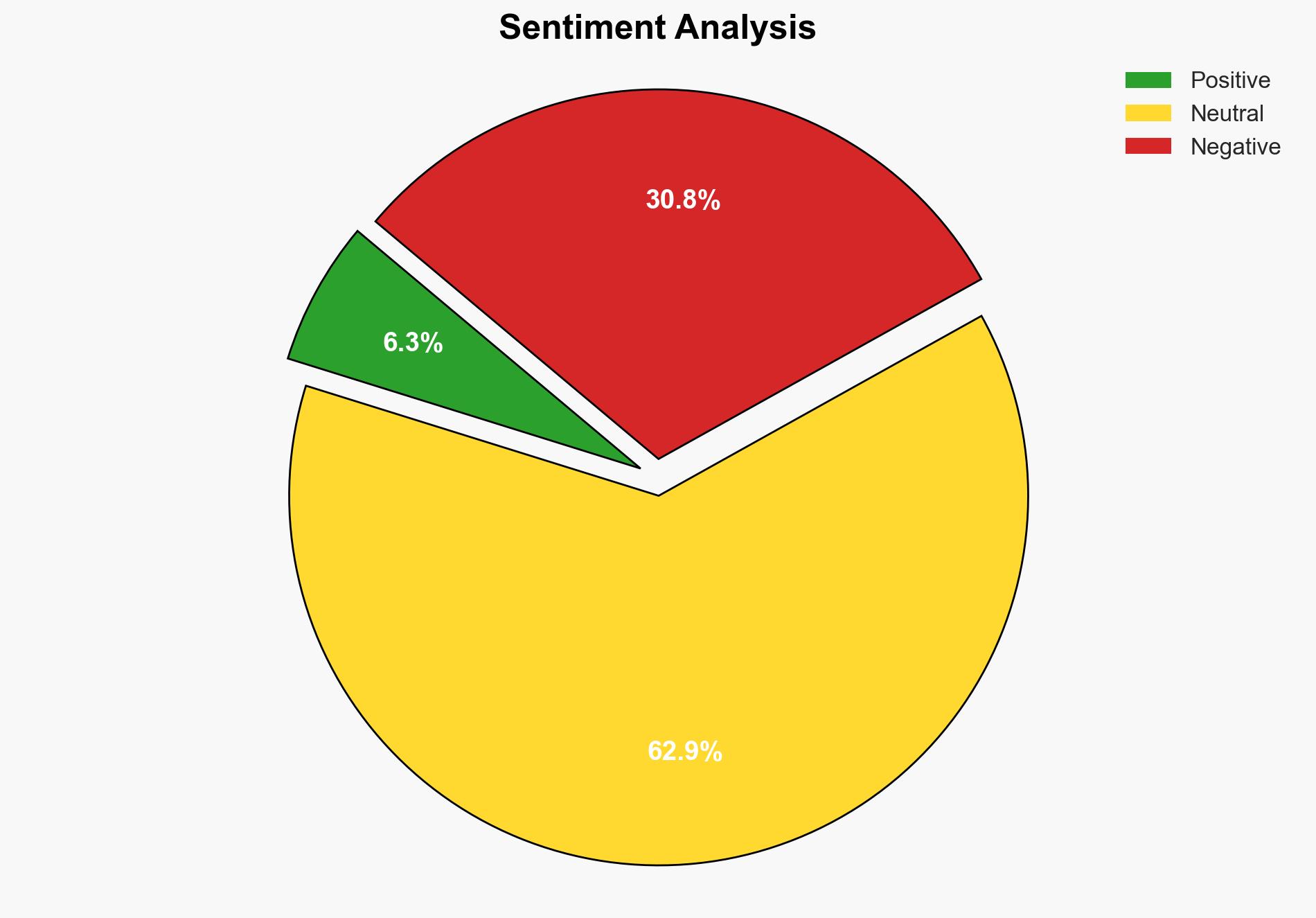Syria points finger at Hezbollah as fighting erupts on border with Lebanon – Al Jazeera English
Published on: 2025-03-17
Intelligence Report: Syria points finger at Hezbollah as fighting erupts on border with Lebanon – Al Jazeera English
1. BLUF (Bottom Line Up Front)
Recent clashes on the Syria-Lebanon border have escalated tensions, with Syria accusing Hezbollah of involvement in the violence. The conflict has resulted in casualties on both sides, including the death of a Syrian soldier. The situation poses significant risks to regional stability and could potentially lead to broader conflict if not addressed. Immediate diplomatic and military measures are recommended to de-escalate tensions and prevent further violence.
2. Detailed Analysis
The following structured analytic techniques have been applied for this analysis:
General Analysis
The border clashes between Syria and Lebanon have intensified, with Syria alleging that Hezbollah was involved in the killing of a Syrian soldier. Reports indicate that the Syrian army has retaliated by shelling Hezbollah positions. Both sides have communicated to ease tensions, but the situation remains volatile. The involvement of armed groups and the complex terrain of the border area complicate efforts to control the situation. The Lebanese military has increased its presence to manage security, but the risk of further escalation remains high.
3. Implications and Strategic Risks
The ongoing conflict poses several strategic risks, including:
- Potential for a broader military conflict involving regional powers.
- Destabilization of Lebanon and Syria, impacting regional security and economic interests.
- Increased refugee flows and humanitarian crises in border areas.
- Heightened tensions between Hezbollah and other regional actors, potentially drawing in external parties.
4. Recommendations and Outlook
Recommendations:
- Initiate diplomatic efforts to mediate between Syria and Lebanon to prevent further escalation.
- Enhance intelligence-sharing mechanisms to monitor and address cross-border threats.
- Support Lebanon’s request for international assistance to bolster its military capabilities.
- Encourage regional dialogue to address underlying tensions and prevent future conflicts.
Outlook:
Best-case scenario: Successful diplomatic interventions lead to a ceasefire and a reduction in hostilities, stabilizing the border region.
Worst-case scenario: Escalation into a broader conflict involving regional powers, leading to significant casualties and regional instability.
Most likely outcome: Continued low-level skirmishes with periodic escalations, requiring ongoing diplomatic and military attention.
5. Key Individuals and Entities
The report mentions significant individuals and organizations, including:
- Paul Morkos
- Joseph Aoun
- Resul Serdar
- Hussein Haj Hassan
- Bashar al Assad
These individuals are central to the unfolding events and may play critical roles in future developments.





